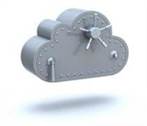CM provides an orderly way to facilitate change, based on a documented requirements baseline, and utilizing best practices in the change management process. This is intended to ensure that expectations are fully understood and realized in an efficient manner, including proper consideration of all potential impacts on customers and resources. Create a configuration management practice that will provide ongoing value to the organization.
Consistent with the federated architecture approach described in Section 3, essential architectural information must be registered with DARS so that discovery of reusable architectural data can be accomplished throughout the Department. Each Architectural Description effort must establish a CM process and document it in a CM Plan. This plan is submitted when each version or update to the Architectural Description is submitted to DARS for registration and discovery. In developing CM processes for Architectural Descriptions it is recommended that best practices be adopted such as those outlined in Electronic Industries Alliance (EIA) Standard EA-649. This a flexible, but well-defined standard employed most often at the enterprise level. Its flexibility lies in the ability to provide CM practices that can be selectively applied to the degree necessary for each of the areas to be covered under this plan.
Harness Configuration Management Superpowers
Comments about specific definitions should be sent ccb configuration control board to the authors of the linked Source publication.

Upon, approval by the CCB, the new DM2 is published along with a record of changes from last baseline and a new working copy is setup. Appropriate evaluation criteria should be developed in the CM Plan and applied according to the scope and tier of the Architectural Description effort. The evaluation criteria must include factors that test compliance with the Net-Centric Reference Architectures and the DoD IE as outlined in Section 3.0 of the DoDAF and the Net-Centric Guidance contained in Volume 2. The results of architecture evaluations should be used to guide decisions for approving proposed changes, as well as in planning future extensions or updates to the Architectural Description. These CM activities are complementary with existing DoD CM processes for the DARS, the DoD Information Technology Standards Registry (DISR), and the Metadata Registry (MDR). A more comprehensive description of the overall CM Process is found online in the DoDAF Journal.
Configuration Documentation Classification Guide
Use this template to create your board charter for your configuration control board (CCB). DM2 change requests (action items) can be raised by any of the working group members or flow down from the CCB. A working copy of the DM2 is maintained, along with all reference and research materials and the current action item tracker. DM2 issues impacting the foundation are forwarded to the International Defense Enterprise Architecture Specification (IDEAS) Group for consideration. When a number of changes have accumulated, the TWG recommends a new DM2 baseline version be established and released.

The CCB may, from time to time, establish technical working groups (TWG), as required, to oversee, review, and make recommendations to the board on specific technical aspects of the CM Program, or configuration items. TWGs provide the subject-matter expertise necessary to ensure that documents, the DM2, and other products under configuration control of the CCB are maintained in a responsible manner. TWGs, when tasked by the CCB, provide detailed and comprehensive technical review of proposed changes and recommendations to the CCB on action(s) to be taken that result from recommended changes.
